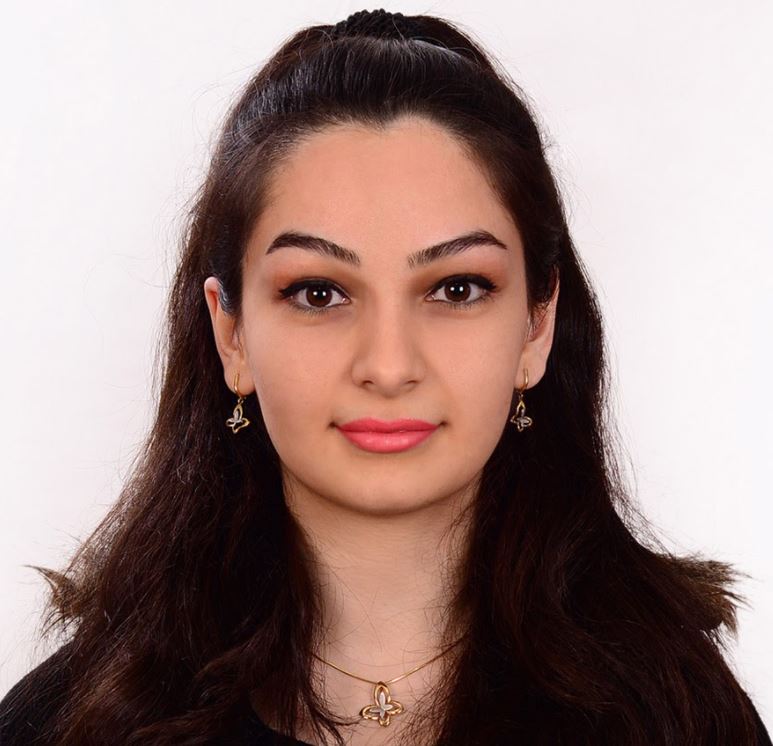News | University of Hawaii MURP student, Farnaz Kaviari, Details her Passion for Location-based Data and Disaster Resilience Research
Stop the VideoNews

University of Hawaii MURP student, Farnaz Kaviari, Details her Passion for Location-based Data and Disaster Resilience Research
Wednesday, February 17, 2021
by Dan Lamere, USC, Master of Urban Planning 2021
For our latest student spotlight, we feature Farnaz Kaviari, Graduate Assistant (UTC Agent Based Modeling) in the Urban and Regional Planning program at the University of Hawaii at Manoa.
Farnaz’s research interests include Geographic Information System (GIS), Agent-Based Modeling, Disaster Management, Land-Use and Urban Growth Modeling, Transportation, and Artificial Intelligence. During the pandemic, Farnaz has been focused on the agent-based modeling of the spread of COVID-19 in Waikiki, Hawaii. “I model the movements of people in the streets relative to their interactions in the transportation systems and public areas. I implement different scenarios, such as closing public areas, wearing masks, and social distancing, to evaluate their impacts on the spread of the virus. This simulation could aid effective planning for a safe-guarded resilient community.”
Farnaz is a native of Iran, where she first became interested in studying location-based data in high school. This led her to selecting a degree in Civil Engineering as an undergraduate at Zanjan National University, followed by a Master of Science in Civil Engineering and GIS from K.N. Toosi University of Technology. “During my education, I learned that the interdisciplinary nature of GIS makes it necessary for those involved in this domain to be familiar with different fields,” which ultimately instigated Farnaz to pursue a Master’s degree in Urban and Regional Planning at the University of Hawaii, where she was able to use GIS, agent-based modeling, and programming to solve location-based problems in disaster management, transportation, and urban planning.

Farnaz shares that her interest in transportation stems from the location-based character and dynamic behavior of the transportation problems in which her research is grounded. At the University of Hawaii, she developed an agent-based model to simulate the evacuation process for a catastrophic tsunami in Waikiki, Hawaii, which estimated the clearance time and at-risk population in a short-notice evacuation. She hopes to continue to work on similar types of transportation and disaster management research topics as a research assistant at the University of Hawaii at Manoa. “My goal is to improve and employ my knowledge in GIS, agent-based modeling, transportation, and programming to solve location-based problems in various sectors and help to make communities more resilient.”
Outside of her work as a researcher, Farnaz has taken full advantage of living in Hawaii with all the recreational activities available there, such as swimming, snorkeling, fishing, hiking, and camping. “The nature of Hawaii is impressive, and I love being in spectacular places and enjoying breathtaking views. People in Hawaii behave with love and aloha, and they have made me feel like I am home.” As she continues her research in Hawaii, Farnaz hopes to help preserve communities by using her technical knowledge and abilities to better prepare for natural disasters, and protect the people who have been so welcoming to her.
About the Author:
Dan Lamere is a second-year Master of Urban Planning student at the USC Price School of Public Policy. He works as a staff writer and project coordinator for the METRANS student team.
News Archive
- December (1)
- November (6)
- October (4)
- September (2)
- August (3)
- July (4)
- June (3)
- May (7)
- April (8)
- March (11)
- February (8)
- January (7)
- December (7)
- November (8)
- October (11)
- September (11)
- August (4)
- July (10)
- June (9)
- May (2)
- April (12)
- March (8)
- February (7)
- January (11)
- December (11)
- November (5)
- October (16)
- September (7)
- August (5)
- July (13)
- June (5)
- May (5)
- April (7)
- March (5)
- February (3)
- January (4)
- December (4)
- November (5)
- October (5)
- September (4)
- August (4)
- July (6)
- June (8)
- May (4)
- April (6)
- March (6)
- February (7)
- January (7)
- December (8)
- November (8)
- October (8)
- September (15)
- August (5)
- July (6)
- June (7)
- May (5)
- April (8)
- March (7)
- February (10)
- January (12)















